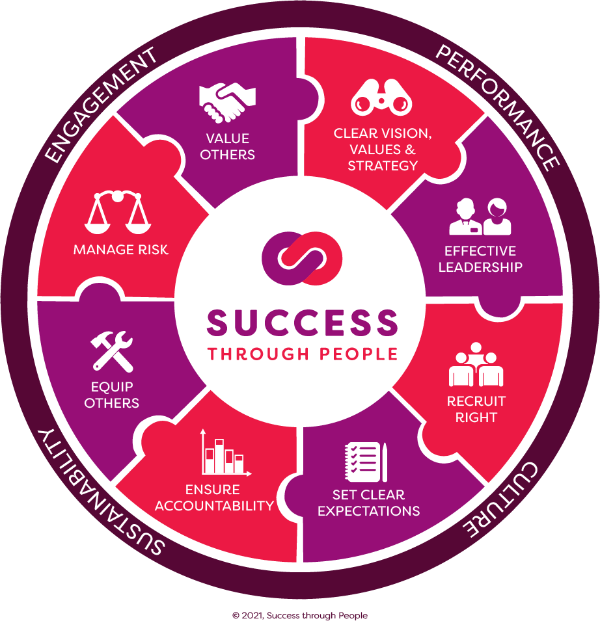Our exclusive Success Through People© Model takes the mystery out of managing people in small and medium-sized businesses.
THE STP MODEL
OUR EXCLUSIVE SUCCESS THROUGH PEOPLE© MODEL, AND THE TOOLS AND SUPPORT WE PROVIDE, TAKES THE CULTURE, LEADERSHIP AND ENGAGEMENT LEARNINGS FROM THE ACADEMICS AND THE ’’BIG PLAYERS”, AND APPLIES IT TO SMALLER BUSINESSES, SO THAT YOU TOO CAN HAVE SUSTAINABLE, PROFITABLE BUSINESSES THAT ARE ALSO GREAT PLACES TO WORK.
The Success Through People© Model provides a tangible structure and process to help you assess current people management practices within your business, and identify and prioritise strategies to:
- Increase performance & profit
- Improve engagement & satisfaction (of you AND your team!)
- Build great workplace cultures
- Ensure sustainability
While the content has recently been refreshed and the model itself has had a facelift, we’ve been successfully using this tool with our clients for around 10 years, and it forms the centrepiece of our offering.
Curious? Check out the 8 core elements of the model by clicking on each of the “hotspots” on the image below, and or download a PDF Success Through People Model summary.

Successful businesses have a clear sense of who they are, where they are going and how they are going to get there. There is absolute clarity around the vision that inspires them, the values that define them and the strategy that will enable their future success.
Successful businesses actively identify, eliminate and/or control the risks associated with engaging people. In addition to managing relevant legislative risks by ensuring compliance with the Fair Work Act and Work Health & Safety Act (in Australia), for example, broader business risks such as those related to succession planning, knowledge/information management and employee conduct and performance are also acknowledged and effectively managed.
